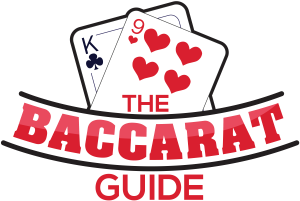Some Baccarat History
If we put aside the black ties, the velvet curtains and the overall exclusive atmosphere, baccarat is one of the simplest casino games around. In addition, baccarat is a beatable game with a low house edge, which makes it one of the best bets you can make! Here you can read about baccarat history and learn how to play the game.
Variations of the Baccarat game
Both the American and European versions of baccarat and the French Chemin de Fer are late developments of the Italian game called baccara, which means zero in Italian. The origins of baccara go back to an old Etruscan myth. According to the myth, a blonde virgin had to toss a nine sided die to decide on her destiny. If the die landed on eight or nine, she would have to fulfill her destiny and become a priest. If the die landed on six or seven, she would be forbidden to participate in any religious activity. If the die landed on any other number, the virgin had to walk into the sea.
The Italian game baccara was popular among French aristocracy during the end of the 15th century. Baccara had evolved to the European version of baccarat, which is still played in European casinos today as well as the French variation of baccarat known as Chemin de Fer, which is mainly played in casinos in France. The American version of the game was introduced to Nevada casinos in the 1950s by Francis Tommy Renzoni, who imported the game from Havana.
Baccarat still carries an aroma of aristocracy and exclusivity. In American casinos, baccarat is played in a separated area of the casino, hidden behind velvet curtains. Baccarat players are usually dressed up and the betting limits are higher comparing to other table games. In order to attract the medium budget players, a lower limit version of baccarat, called mini baccarat, was invented. Mini baccarat is played on a smaller table, inside the casino gambling area with lower betting limits than baccarat.
How to Play Baccarat
Baccarat is played with 3 dealers and up to 12 or 14 players. Baccarat is usually played with 8 standard card decks. Aces valued as one, face cards and ten cards valued as zero, and the rest of the number cards worth their face value. The suit has no meaning. The object of the game is to get as close to 9 as possible.
The play begins by all players, including the dealer, placing their bets either on the player, the banker, or on a tie. Traditionally, the dealer bets on the banker. The dealer can be the house dealer or one of the players. After everyone has placed their bets, the dealer gives two cards to each player and to the banker.
The score of each hand is calculated as the sum of the two cards minus the left digit. For example, if the sum of the two cards is 15, the score would be 5. The decision whether to deal a third card is determined by a set or rules and it is not up to the player or the dealers decision.
- If the score of the players hand is 9 or 8, he wins
- If the score of the dealers hand is 9 or 8, it is a tie
- If a players score is 7 or 6, he can be dealt a third card
- If a players score is 5 or less, he has to receive a third card
- If a player gets a third card and the score of the dealers hand is 2, 1 or 0, he must draw a third card
- If the score of the dealers hand is 3 and the players third card is any value but 8, he must draw a third card
- If the score of the dealers hand is 4 and the players third card value is between 2 and 7, he must draw a third card
- If the score of the dealers hand is 5 and the players third card value is between 4 and seven, he must draw a third card
- If the score of the dealers hand is 6 and the players third card is 6 or 7, he must draw a third card.
- If the score of the dealers hand is 7, he cannot draw a third card.

